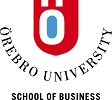No 2017:1: The Characteristics and Performance of Family Firms: Exploiting information on ownership, governance and kinship using total population data
Fredrik W. Andersson (), Dan Johansson (), Johan Karlsson (), Magnus Lodefalk () and Andreas Poldahl ()
Additional contact information
Fredrik W. Andersson: Statistics Sweden, Postal: SE - 701 89 ÖREBRO, Sweden
Dan Johansson: Örebro University School of Business, Postal: Örebro University, School of Business, SE - 701 82 ÖREBRO, Sweden
Johan Karlsson: Örebro University School of Business, Postal: Örebro University, School of Business, SE - 701 82 ÖREBRO, Sweden
Magnus Lodefalk: Örebro University School of Business, Postal: Örebro University, School of Business, SE - 701 82 ÖREBRO, Sweden
Andreas Poldahl: Statistics Sweden, Postal: SE - 701 89 ÖREBRO, Sweden
Abstract: Family firms are often considered characteristically different from non-family firms, and the economic implications of these differences have generated significant academic debate. However, our understanding of family firms suffers from an inability to identify them in total population data, as this requires information on owners, their kinship and involvement in firm governance, which is rarely available. We present a method for identifying domiciled family firms using register data that offers greater accuracy than previous methods. We then apply it to data from Statistics Sweden concerning firm ownership, governance and kinship over the years 2004-2010. Next, we use Swedish data to estimate these firms’ economic contribution to total employment and gross domestic product (GDP) and compare them to private domiciled non-family firms in terms of their characteristics and economic performance. We find that the family firm is the prevalent organizational form, contributing to over one-third of all employment and GDP. Family firms are common across industries and sizes, ranging from the smallest producers to the largest multinational firms. However, their characteristics differ across sizes and legal forms, thereby indicating that the seemingly contradictory findings among previous studies on family firms may be due to unobserved heterogeneity. We furthermore find that they are smaller than private non-family firms in employment and sales and carry higher solidity, although they are more profitable. These differences diminish with firm size, however. We conclude that the term ‘family firm’ contains great diversity and call for increased attention to their heterogeneity.
Keywords: entrepreneur; family firms; employment; GDP; register data
57 pages, February 21, 2017
Full text files
wp-1-2017.pdf
Questions (including download problems) about the papers in this series should be directed to ()
Report other problems with accessing this service to Sune Karlsson ().
This page generated on 2024-02-05 17:13:02.

